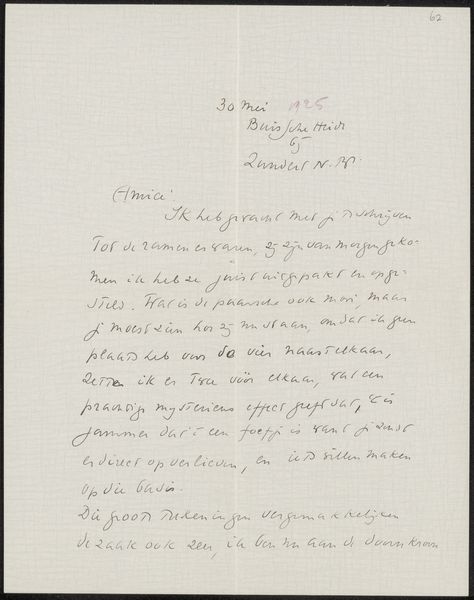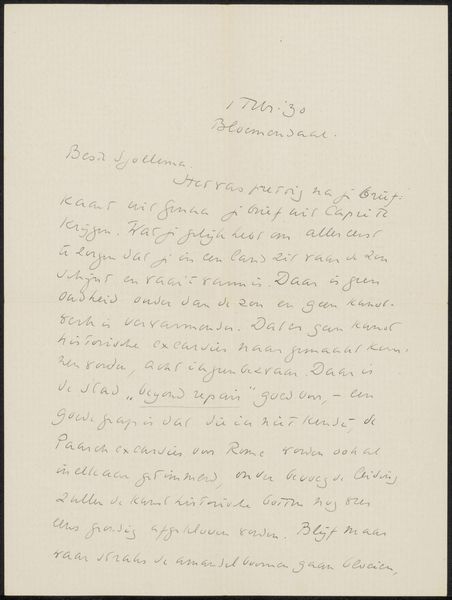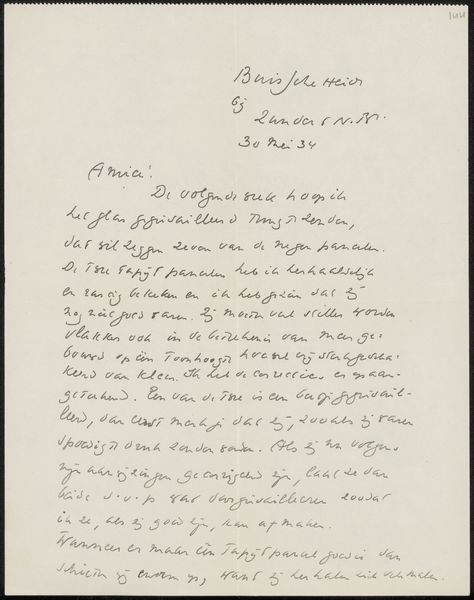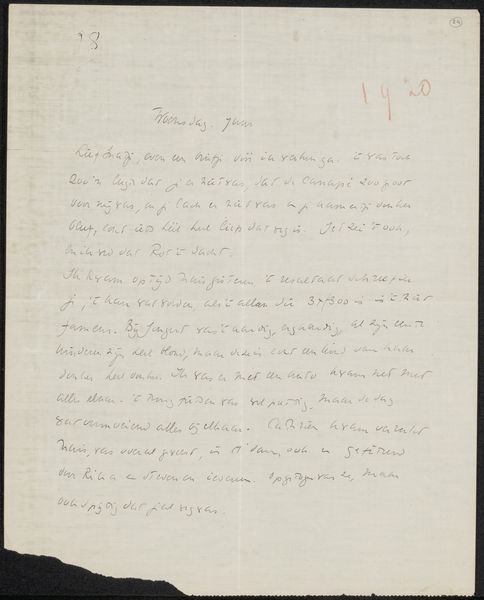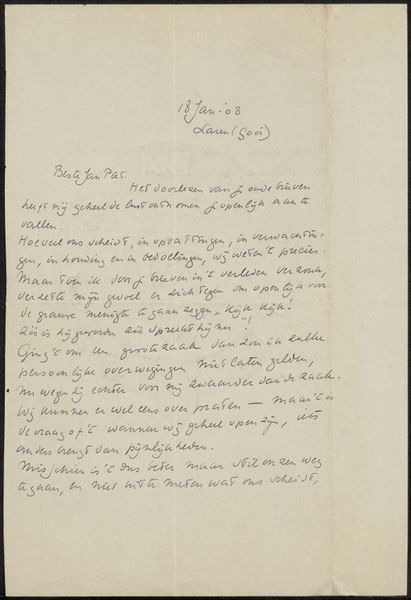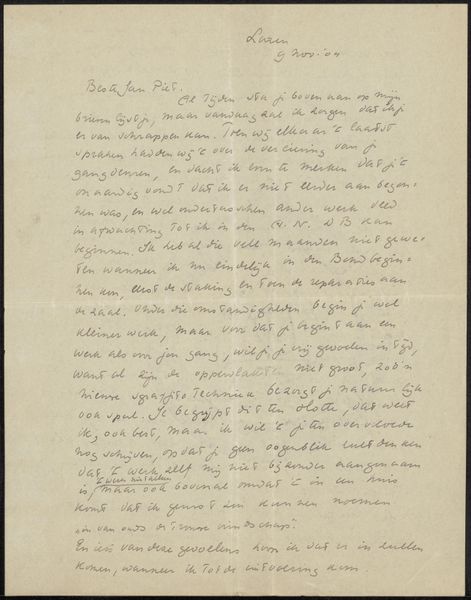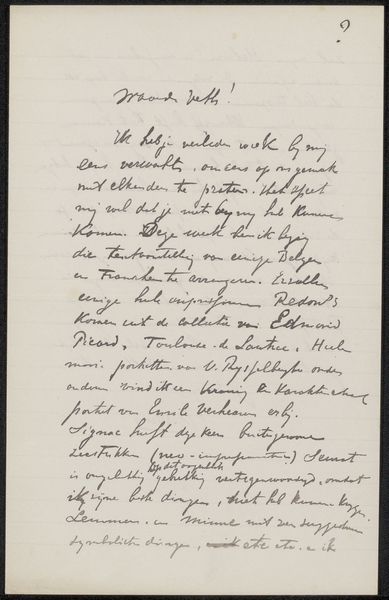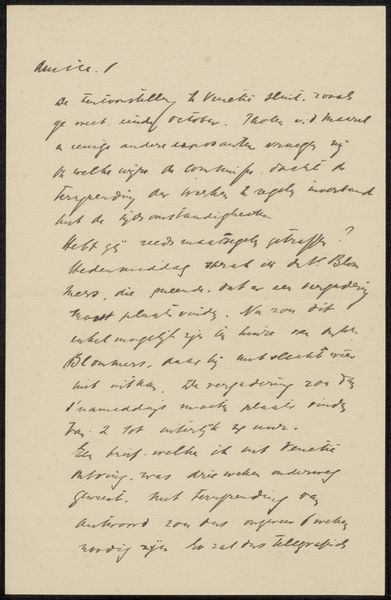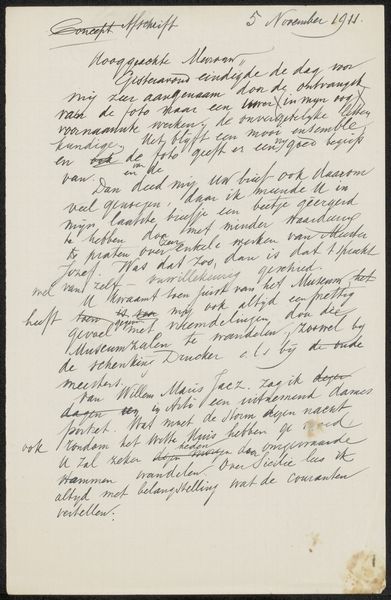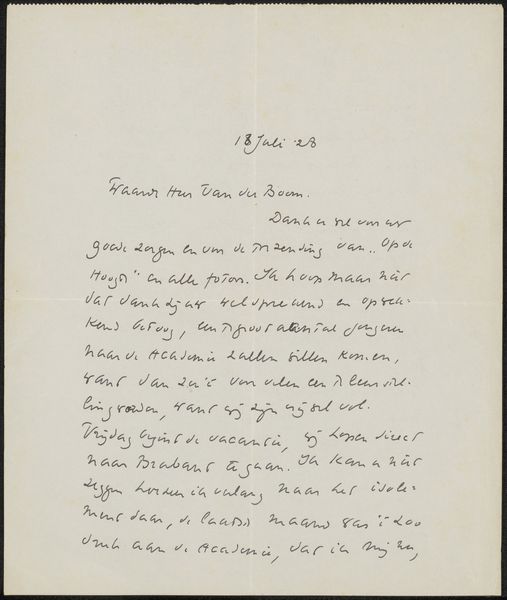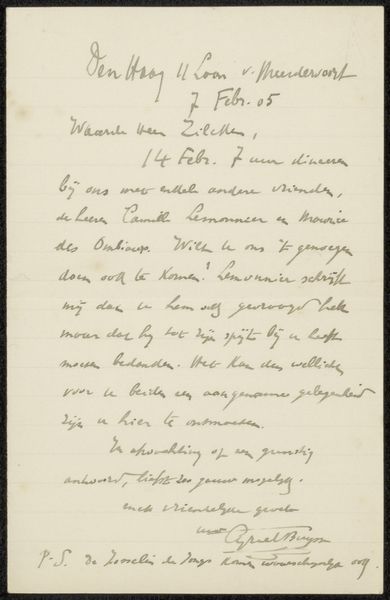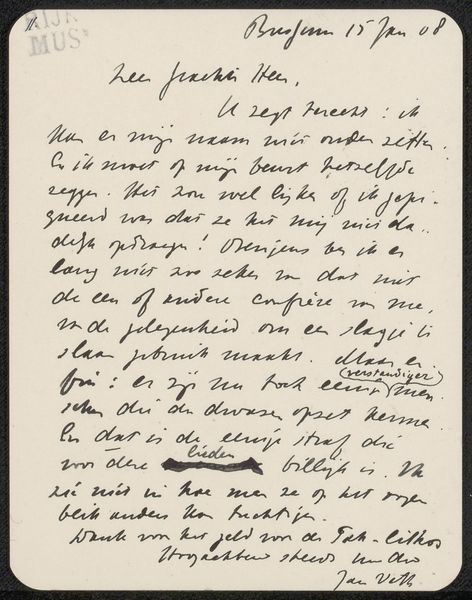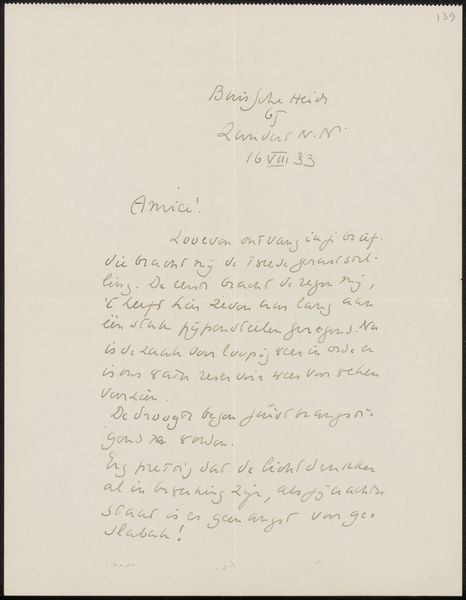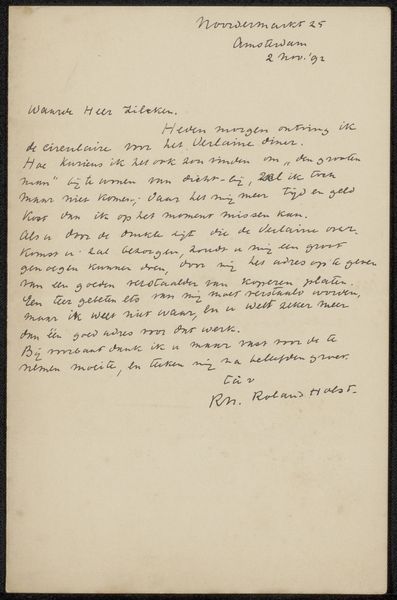
drawing, paper, ink, pen
#
drawing
#
comic strip sketch
#
dutch-golden-age
#
old engraving style
#
hand drawn type
#
paper
#
personal sketchbook
#
ink
#
ink drawing experimentation
#
pen-ink sketch
#
ink colored
#
pen work
#
symbolism
#
sketchbook drawing
#
pen
#
sketchbook art
Copyright: Rijks Museum: Open Domain
Editor: This is "Brief aan Jan Veth," a letter from 1896 by Richard Nicolaüs Roland Holst, done in pen and ink on paper, housed at the Rijksmuseum. The handwriting is gorgeous, but difficult to decipher! It makes me wonder about the relationship between the artist and the recipient. How do you interpret this work, looking at it from a historical point of view? Curator: Well, it’s tempting to simply see a personal letter, but considering the period and Holst’s circle, we need to ask: How does private correspondence function within the broader artistic and intellectual discourse of the time? What role did letter-writing play in solidifying artistic movements like Symbolism, which Holst was part of? Editor: So, you're suggesting it’s more than just a personal note; it's a document reflecting the artistic environment? Curator: Exactly! These letters were often shared, discussed, and sometimes even served as informal manifestos. Think of the Bloomsbury Group a little later in England, their letters are vital sources of understanding that artistic moment. With Holst being involved with the Dutch Symbolist movement, "De Stijl," we can interpret this letter to Jan Veth as part of that exchange, revealing their thought processes, critiques, and potentially, even their collaborative strategies. How might this inform our view of Symbolism in the Netherlands? Editor: That’s fascinating. I never considered how a personal letter could act as a public or semi-public document, shaping artistic movements! Now, it's clear this seemingly intimate note might hold clues about the broader artistic climate of the time. Curator: Indeed. By looking at it as more than a simple greeting, we see how artists use all means, including private correspondence, to negotiate their roles and impact within the public sphere of art. Editor: I learned a lot about how everyday documents might reveal a great deal about art history!
Comments
No comments
Be the first to comment and join the conversation on the ultimate creative platform.
